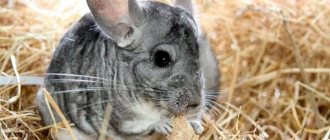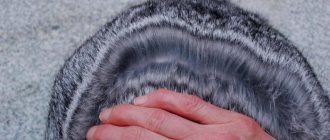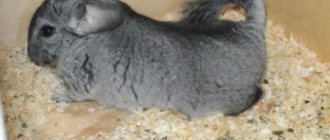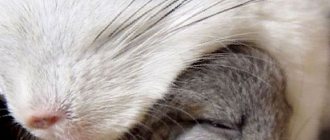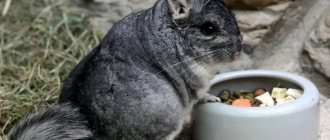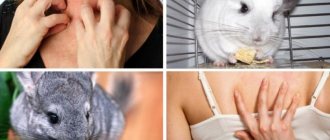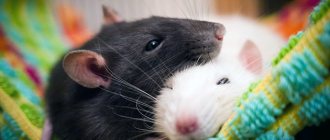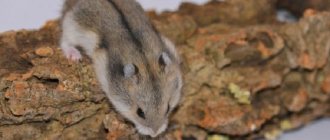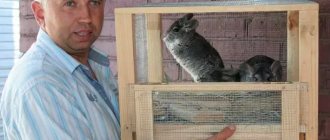- Historical reference
- Chapman's contribution
- Chinchillas today
Chinchillas in nature are native to South America, and their habitat in the wild is the Andes mountain range. Historical background - domestication and domestication, the first chinchilla farm, Chapman's contribution to the development of the chinchilla business.
South America gave the world a beautiful rodent.
The history of chinchillas was formed in South America. This rodent was named after one of the Indian tribes ChynChylla. Now this word sounds like chinchilla. Over time, the ChynChylla tribe was conquered by the Incas, who adopted the methods of breeding these rodents.
The habitat of the animals is the Andes mountain system in South America. They live at altitudes of up to 3000 meters above sea level.
Origin of Animals (Chinchillas)
Chinchillas are small rodents with very valuable fur. Their natural habitat is South America. Previously, they were found in the highlands of Bolivia, Argentina, Chile and Peru. The first description of these, perhaps inaccurate, appeared in the fundamental work of a 16th century Spanish historian. This fundamental work describes the geographical, historical and cultural characteristics of the inhabitants of South America and the nature of those places.
But a more careful and pragmatic interest in these animals appeared in the 19th century, when their skins began to appear on sale in Europe and North America. Chinchilla fur coats are still considered the rarest and most expensive.
Historical reference
It is the beauty and “fluffiness” of the fur that is the problem of all chinchillas, whose history is replete with human violence. The ancient Indians began to take a closer look at their fur, deciding that the silvery skin would perfectly decorate their “outfit.” Following the Indians, the Incas began to hunt the animals, and then the Europeans. The Spaniards arrived and began catching rodents. Europeans were very impressed by the density and beauty of chinchilla fur. Since the animals had no fear or distrust of people, they could be caught with almost bare hands. The brutal and massive extermination of these animals began. Fur coats made from such rare and high-quality fur flowed into Europe in a huge stream. The first to try on the clothes were Spanish nobles and kings. And by the end of the eighteenth century, all the upper strata of the European population wore expensive and beautiful fur coats.
The mass extermination of chinchillas has put them at risk of extinction. South American countries have sought to impose bans on the capture and export of these animals. But all the measures led to nothing, poaching and smuggling increased.
And only thanks to the efforts of engineer Chapman, the animal survived in this world. From this moment on, the history of chinchillas received a qualitatively new development.
Living conditions in the wild
These animals live in harsh, cold conditions in the highlands. Therefore, they have very dense and thick fur. Among the different types of fur-bearing animals, chinchilla fur is the densest. This is very convenient for the animal in the sense that such fur does not contain parasites. But this fur cannot tolerate moisture - it quickly gets wet. So chinchillas like to swim not in water, but in sand.
In addition, the fur is not only warm and durable, but also very beautiful, which served their owners well. It was because of such high-quality fur that rodents began to be actively hunted. But a chinchilla is a small animal; to sew one fur coat you have to kill at least a hundred chinchillas. Hunting in the mountains is quite difficult, and finding small rodents is also difficult. So fur remained exotic and inaccessible for a long time. But the demand for it was always high and we had to invent other ways to obtain it. Now, for the sake of expensive fur, they are bred in captivity on fur farms. And they bred many different breeds.
These rodents in nature are divided into two types: long-tailed and short-tailed. Long-tailed chinchilla fur is considered more expensive than short-tailed chinchilla fur. Therefore, there are very few long-tailed chinchillas left, they are found only in certain regions of the high Andes, for example, in northern Chile. There are slightly more short-tailed animals preserved in nature. But, nevertheless, both species are listed in the Red Book.
Due to the high demand for fur, rodents were hunted extensively and successfully. Therefore, their numbers in their homeland, in the mountains of South America, have dropped significantly and their distribution area has also greatly decreased. Now these animals have begun to be protected in those places where they still live in the wild. But there are still much fewer of them now than there once were.
Population
Despite the presence of natural enemies, it is humans who have the greatest negative impact on the chinchilla population. After the conquest of the Incas, the Spaniards brought Indian clothing made from chinchilla skins to Europe as trophies. The thick, dense fur immediately captivated European fashionistas, and since then a real hunt for chinchillas has been announced.
By the beginning of the 20th century, representatives of this family were officially recognized by the Chilean authorities as an endangered species. In order to protect and restore the number of fluffy animals, the chinchilla was included in the Red Book of the International Union for Conservation of Nature. Now poaching is prosecuted by law, however, legislative acts, unfortunately, are not always respected.
The cost of a medium-length fur coat made from chinchilla skins starts at $20,000. Moreover, to produce such a product it is necessary to kill 150-200 adult individuals.
According to statistics, in the period 1828-1916, more than 21 million chinchilla skins were imported from South America to European countries. Now the population is gradually recovering, but scientists believe that it will no longer be possible to reverse the process of extinction of fluffies. The last count of chinchillas was carried out in 2018 - then zoologists recorded about 40 colonies of animals in South America, which corresponds to approximately 10 thousand individuals.
History of chinchilla breeding
Since there were fewer and fewer wild chinchillas in nature, they decided to breed them in captivity. Home breeding of rodents was started by an engineer from North America named Chapman. In 1919, he went to catch chinchillas in the mountains of South America. The matter turned out to be very labor-intensive and long. For 3 years, Chapman and his assistant hunters managed to catch only 11 pieces. It was impossible to figure out who was a chinchilla girl or a chinchilla boy, as many were caught, so many turned out. So out of all 11 there were only 3 females.
It took some more time to obtain permission from the government to take the animals out of the country to the United States. And before that, Chapman spent a long time adapting them to life in flat conditions.
Since 1923, rodents exported to California became the founders of the domestic chinchilla population. Chinchilla farms have appeared in many countries. And over time, they began to be kept not for the purpose of obtaining fur, but simply as pets.
Interesting Facts
Due to their small numbers and living in high mountain areas, chinchillas have not been studied as well as we would like. However, several interesting facts about these mysterious animals are still known. For example:
- The chinchilla body does not synthesize the enzyme that breaks down sucrose into simpler carbohydrates - glucose and fructose. Therefore, sweet and starchy foods are considered harmful to them.
- Female chinchillas have poorly developed parental behavior. They may leave the nest frequently and feed their young with milk for only 6-8 weeks. At the same time, until the new mother’s lactation normalizes, she does not try to feed the puppies at all. They literally run after her, trying to grab the nipple. Sometimes, in competition for mother's milk, stronger cubs kill weaker ones. Also, the chinchilla, unlike most other mammals, never drags its puppies to warmer and more protected conditions.
- In natural conditions, chinchillas never suffer from indigestion. The thing is that the alpine plants that fluffies eat contain astringents that strengthen the stool.
- Chinchillas are very hardy animals with good health. It has now been established that a healthy adult chinchilla can survive without food and water for 6-7 days. In this case, the animal will not lose weight and will not suffer complications from internal organs.
- Chinchillas are one of the few animals that do not shed seasonally. Also, their fur is hypoallergenic, and due to its high density, skin and blood-sucking parasites cannot live in it. Therefore, fluffies are ideal pets for allergy sufferers. However, sometimes chinchillas can still shed their fur - during stressful situations and when protecting themselves from enemies. The fluffy one easily throws off a clump of fur caught in the teeth of a predator and runs away for cover.
- In natural conditions, the chinchilla often uses one very original defensive reaction. If the animal has nowhere to hide from the enemy, it stands on its hind legs and, emitting a battle cry, literally bombards the predator with a powerful stream of urine.
Many owners of these cute animals have no idea where chinchillas live in the wild and know nothing about their range and habitat. However, this information is very useful - and not only for general development. After all, knowledge of the processes that occur with a chinchilla in natural conditions can help establish mutual understanding and trusting relationships with your pet in the shortest possible time.
Biology of chinchillas
These animals are quite fertile, so it is beneficial to keep them in captivity. A girl chinchilla begins to bear offspring at about six months of age. And he does this two or three times a year. Each litter contains one or two or even three cubs. But with age, their number usually increases. So in the future, each chinchilla girl can bring up to 5 cubs at a time.
Unlike many rodents, chinchillas are long-lived. In captivity, subject to all conditions of detention, animals live 20 - 30 years. There were cases when they lived to be 37 years old. And they are capable of fully reproducing until they are 12-15 years old.
Chinchilla - description and external characteristics
The chinchilla is similar to a large squirrel (weighs from 300 to 800 g, males are smaller than females), but in terms of its method of movement it is more similar to a rabbit. They have very thick, thin and soft fur, large dark eyes and large ears. The ears are the only organ of chinchillas that allows them to reduce body temperature - they are covered with a dense network of capillaries.
The body length of chinchillas is from 22 to 38 cm, the tail is 10-17 cm. The hind legs are longer than the front, so their movement resembles the movement of a rabbit. The number of toes on the hind legs is four, and on the front legs there are five. The front legs can perform exciting movements.
The number of teeth reaches 20, and they grow throughout life. Therefore, it is very important that chinchillas have something to chew on.
Baby chinchillas have white teeth, but as adults they turn orange.
How to determine the gender of a chinchilla
If you decide to have this animal at home, it is better to know in advance how to distinguish a female chinchilla from a male. You may want to have babies, or perhaps, on the contrary, you will decide to have one or a pair of rodents of the same sex so that they simply do not get bored, but you are not planning on having babies.
So that there are no surprises, and the animal that, in your opinion, a male chinchilla, does not bring unplanned offspring, approach the choice of a pet responsibly.
How to distinguish a boy from a girl chinchilla by appearance? It's easier with adults.
These animals have pronounced sexual dimorphism. This means that individuals of the same species differ significantly in appearance. The male chinchilla is significantly smaller and weighs less. If the average weight of a female is 800 g, then a male chinchilla weighs approximately 600 - 700 g.
Therefore, you can distinguish the sex of a chinchilla even by eye, if there are many of them and they are adults. It’s just that the chinchilla girl is larger and more active. And even more aggressive towards boys. So you can notice differences in behavior.
But with small cubs, problems may arise in how to distinguish a female chinchilla from a male. You can simply find on the Internet the genitals of chinchillas in the photo and their description.
There is no need to determine gender if the animal is not feeling well or is not in the mood. After identification, be sure to treat the chinchilla and stroke it to calm it down.
Mountain viscachas
The mountain viscacha genus is represented by three species:
- Southern,
- Patagonian,
- Northern.
Initially, the animals inhabited the mountainous regions of Peru, from where they eventually spread to the territory of Chile and other South American countries. Externally, mountain viscachas look more like large squirrels than chinchillas. They differ from other relatives in that they are often active during the daytime. They prefer to live at an altitude of four to five thousand meters, although individual populations are also found in lower mountainous areas. They prefer to settle on open rocks and choose places with dry and sparse vegetation. Most of the diet consists of lichens, mosses, succulents and roots.
Chinchilla girl or boy, who is better?
If you have never kept these animals at home, then it is difficult to say who will be better for you: a boy or a girl chinchilla. Females of this species are usually more active and dominant. But if you only need one animal, just choose the one you like best. After all, they all have not only different appearances, but also different characters.
Perhaps, having got yourself one animal, you will want to find a mate for it so that it does not get bored in your absence. Knowing the characteristics of behavior and maintenance and how to determine the gender of a chinchilla, you will be able to choose the right partner.
These animals are monogamous and usually form a pair for life. We must also take into account that in chinchilla “families” there is always a matriarchy, so the male chinchilla usually submits.
Characteristic traits of character and habits
Each chinchilla has its own character and habits; even animals from the same litter do not have the slightest unity. Just like humans, animals have 4 character types.
Choleric
This is a nimble, agile and active animal. During the daytime he dozes forward, however, his sleep is light, and he can wake up from the slightest rustle. During the period of activity, the pet, with inquisitive behavior, studies the objects around it and everything that interests it. Cholerics are quite timid, and, if frightened, the animal will rush around a limited area, demolishing everything that comes across on the road.
Sanguine
A chinchilla that has this type of character is also active and curious, but is less timid and can react calmly to loud sounds and rustles. The animal does not like to be in one position for a long period of time; it walks around the premises with interest with the permission of the owner.
Phlegmatic person
The phlegmatic chinchilla is a calm and balanced pet. Throughout the day she stays in her own home, replacing active games with sweet sleep. Even when awake, the phlegmatic animal moves measuredly, with some laziness.
Features of keeping a chinchilla
- This animal is nocturnal, its activity increases in the dark.
- The chinchilla is afraid of direct sunlight and may even get burned.
- And she does not tolerate strong cold with drafts.
- A girl chinchilla can give birth 3 times a year, but the third time is undesirable, it weakens the body too much.
- You can only bathe a chinchilla in sand.
- Don't forget that this is a rodent. He should always have material to grind down his teeth. And you need to make sure that the animal doesn’t chew anything valuable in the house.
- The cage should be spacious, this is a very active animal, it needs a lot of space.
- But moving and traveling is very stressful for them. Try not to let this happen.
Features of character and lifestyle
Photo: Big chinchilla
Not much is known about the temperament and life activity of chinchillas in natural conditions. Apparently because they are difficult to meet due to their small number. Many observations are made specifically on tamed animals living at home. Chinchillas are collective rodents; they live in packs, in which there are at least five pairs, and sometimes many more. This group life helps them better cope with various dangers and enemies. There is always an individual in the flock that observes the environment while others feed. At the slightest threat, this animal signals to others about the danger by making an unusual whistling sound.
Rodents are most active at dusk, when they emerge from their hiding places to explore areas in search of food. During the day, the animals almost never leave their holes and crevices, resting in them until the evening. Chinchillas' eyes are adapted to the dark and see just fine both at night and during the day. They are helped to navigate in space by their long and very sensitive whiskers, which, like navigators, direct them in the right direction, where food is available. Don’t forget about the big ears, which, like locators, pick up any suspicious sounds. The vestibular apparatus of animals is also well developed, so they easily overcome any mountain peaks and obstacles, moving quickly and deftly.
An interesting and unusual fact is that the head of the chinchilla family is always the female; she is the undisputed leader; it is not for nothing that nature has endowed her with larger dimensions compared to males.
Animals practically never see rain; in the regions where they live, such precipitation is very rare. Chinchillas bathe and clean their fur with volcanic sand, so rodents get rid of not only foreign odors, but also all kinds of parasites that live in their fur. An extraordinary feature of the chinchilla is the ability to shoot out its own fur, like a lizard with its tail. Apparently, this helps them in some situations to escape from predators. The predatory animal grabs the chinchilla’s fur, and a piece of it remains in its teeth, while the rodent runs away.
If we talk about the character of these sweetest creatures, it can be noted that domesticated chinchillas are affectionate and good-natured, and easily make contact with humans. The animal is very smart, it is easy to train it to the tray. Still, you can notice that chinchillas have a freedom-loving and independent disposition; you shouldn’t force the animal to do anything; it may get offended and not communicate. Rodents bite very rarely, only in extreme cases. Of course, each animal is individual, has its own characteristics and habits, and therefore the characters also differ.
Digestive system
Chinchillas have a relatively small and narrow oral cavity, but with well-developed gums. Adult animals have 20 teeth in both jaws (upper and lower), including 4 incisors and 16 molars. The molars are set deeply in the jaw bones. The cross section of such a tooth has the shape of a square. On the grinding surface of the molars there are two transverse lamellar convexities that ensure grinding of food. The total length of these teeth is 1.2 cm. The length of the root is 0.9 cm, and the height of the crown rising above the gum is 0.3 cm. The upper and lower molars are located opposite each other, touching the entire surface. The incisors are somewhat curved. Their crowns overlap each other - the upper one on the lower one. The length of the crowns of these teeth is from 0.6 to 1.2 cm. Newborn chinchillas have 8 molars and 4 incisors. Incisors grow throughout the life of animals. The food, previously crushed by the teeth, then enters the relatively long digestive tract, which is almost 12 times longer than the chinchilla’s body. A simple single-chamber stomach is located in the left side of the abdominal cavity in the hypochondrium, has a length of 3.5 cm and a width of about 2 cm. The volume of the stomach can increase many times during the process of filling it. The small intestine is about 37 cm long. It contains the duodenum and a section of the small intestine that enters into a sac-like cecum of considerable size. Compared to the cecum of other mammals, in the chinchilla it is more adapted to digesting poor plant foods; it has numerous protuberances. The length of the cecum is on average 37.5 cm (27.8 - 42.7), width 2.4 cm (1.7 - 2.8), volume about 70 cubic cm (45-91). In the cecum, food remains for 4-5 days and undergoes further digestive processes. Basically, the breakdown of coarse fiber occurs here with the participation of numerous bacterial microflora, which, during digestion, is an additional source of protein. Absorption of water and non-protein nitrogen occurs in the large intestine. Here, too, thanks to the developed microflora, food is digested, as well as liquid is separated. The chinchilla's large intestine is very long, 2.5 times longer than the small intestine. Its internal structure ensures excellent water absorption, which is a functional adaptation of the body to the lack of water in the natural environment. The large intestine continues into the rectum, which ends at the anus. Undigested food residues, devoid of water, are removed through the anus in lumps in the form of rice grains about 0.6 cm long. The chinchilla excretes two types of feces: night and day. About 50% of the nighttime, soft feces, rich in complete microbial protein, vitamins B and K, are eaten by the chinchilla again, but it does not touch the daytime (hard) feces. The phenomenon of coprophagy (eating feces) in chinchillas is a natural and important physiological process. Night feces are similar in composition to the contents of the cecum, and, thanks to coprophagy, chinchillas “charge” the digestive tract with beneficial microflora. Thanks to coprophagy, food masses pass through the digestive tract twice and are better absorbed; the animal receives complete microbial protein and vitamins B and K, which are synthesized in the cecum.
Adult females are capable of producing 2-3 litters per year. Puberty in puppies can occur early: in females at 2-3 months, in males at 4-5 months, but generally young animals mature by 6-7 months. Females can come into heat from November to May, and its peak is in January - February. Pregnancy lasts 110..115 days. After whelping, the female can become covered again within 18 hours, that is, females combine pregnancy with lactation, some individuals are capable of this even after the second birth. But a third litter within a year is quite rare. The reproductive period lasts on average 8 years or more with a life expectancy of 15... 16 years. Reproductive ability largely depends on the conditions of detention. The female brings 1...5 cubs, most often - 2-3, but some had females who raised 5 puppies. Puppies are born covered with hair, sighted, weighing 35-65 g, and within a week they begin to eat other foods in addition to their mother's milk. Up to 8 months, the height of males and females is the same, then the latter surpass the former in terms of live weight. The chinchilla's body is covered with thick, smooth, silky fur, 2.5-3.0 cm high, with faint covering hair, forming a beautiful dark veil. The color of the hair on the back and sides of a standard chinchilla is from light gray to dark gray with a blue tint; on the abdomen it is white or bluish-white. The downy hair is slightly wavy, very thin, 12-16 microns, the coverts are twice as thick and only 4-8 mm longer than the underfur. On one square centimeter of skin surface there are more than 25 thousand hairs, significantly more than in other fur-bearing animals. The hair has a zonal color: the lower zone is dark gray, sometimes almost black or bluish, the middle zone is white, the upper zone is black, which gives the fur a beautiful play of tones on the curves of the body. The female and male do not differ in fur color. Currently, there is a wide variety of animals with different fur colors.
In nature, the long-tailed chinchilla lives in cold, dry desert conditions, where the relative humidity rarely exceeds 30%. and where there are exceptionally sharp fluctuations in air temperature. Chinchillas are very sensitive to high air humidity, especially in combination with sudden changes in temperature. On steep mountain slopes and rocky deserts, animals use natural caves and crevices as homes, where they escape the heat and cold. Hair shedding in animals of different ages does not occur simultaneously. Puppies change their hair coat 2 times until 7-9 months of age, when the formation of the hair coat ends and it matures for the first time. Adult chinchillas shed gradually throughout the year, and mass, simultaneous shedding is not observed among the entire herd. There are no seasonal differences in hair color, only hair density changes. Full maturity of the hairline in adult chinchillas occurs mainly from November to March and in some individuals lasts from several days to a month, and sometimes more.
Chinchillas are very mobile and quickly respond to external stimuli, as they have well-developed hearing and sense of smell. Chinchillas are active all year round. During the day, it is most active in the first half of the night and before dawn. The peculiarity of these rodents is that they cannot tidy their fur by combing. Therefore, to maintain their hair in a lush condition, they regularly “bathe” in dust. The chinchilla is adapted in natural conditions to feeding on dry plant food. Its main food is stems, leaves, seeds, roots and bulbs of cereals and other drought-resistant herbaceous plants, fruits, leaves and bark of evergreen shrubs, as well as cacti. All these, as well as alpine plants in general, have exceptionally high calorie content and nutritional value. Their need for water is satisfied by the moisture of the plants they eat. Chinchillas are mostly monogamous. Chinchillas mate at night. The fact of mating can be determined by indirect evidence: scraps of fur and the presence in the cell of a waxy elongated flagellum 2.5-3 cm long. With a greater degree of certainty, the fact of a female’s pregnancy can be determined by a change in her weight; the female’s gain compared to the previous weighing is 100-110 g every 15 days. Starting from the 60th day of pregnancy, the female’s nipples swell and her abdomen enlarges. Pregnant females are fed high-quality, fortified and varied food. 10 days before whelping, the nest box is filled with bedding (hay or straw) and turned over with the hole facing up so that the female does not scatter the bedding. A few days before whelping, the sand bath is removed from the cage. The male (for his safety and the female’s peace of mind) is removed from the cage or separated from the female by a partition. During the prenatal period and during childbirth, the room must be quiet; taking the female is prohibited. As birth approaches, the female moves little and does not touch the food. Most often, the female gives birth in the morning from 5 to 8 o'clock. Childbirth lasts from several minutes to several hours and occurs without outside help. During difficult births, the female is given sugar in the form of syrup 2-3 ml or sand 1.5-2 g 3-4 times a day. The cubs are born covered with down, with teeth erupted and eyes open, and on the first day they are able to move quite freely. One-day-old chinchillas are weighed and their sex is determined (in females the anal and genital openings are almost nearby, and in males they are at a much greater distance). Newborn chinchillas have a live weight of 30-70 g. Older females can give birth to more cubs than younger ones (up to 5-6 instead of 1-2). A day after giving birth, the female can be covered by the male. During the year, a female can cover herself and bring cubs 3 times, but a third covering is not advisable, since the female’s body is greatly depleted. As a rule, the female produces milk on the day of birth, but there are also delays in the appearance of milk (up to 3 days). Therefore, if the cubs are sitting hunched over, with their tail drooping, you need to examine the female. If she does not have milk, the chinchillas are placed with a dairy nurse or fed artificially: condensed milk (without sugar) diluted (1:2) in water or cow’s or goat’s milk. During the first week, the cubs are given water every 2.5-3 hours. A few days after birth, the nest box is installed with the entrance to the side so that the cubs can freely crawl out of it (for feeding). The lactation period lasts 45-60 days, at this age chinchilla chicks are approximately weaned; they can be weaned at 30 days of age, especially if the cubs are fed with boiled milk after weaning. Young animals grow quite quickly, month-old cubs are almost three times their one-day weight and weigh 114 g, at 60 days - 201 g, at 90 days - 270 g, at 120 days - 320 g, at 270-440 g and adults - 500 d. As a rule, transplanted young animals are kept in ordinary cages of several heads, females and males separately. Polygamous breeding of chinchillas is also common, when there are 2 - 4 females per male; with age, the number of females can reach up to 4 - 8.
Taming
Unfortunately, a chinchilla cannot be tamed like a cat or dog. She is very independent and prefers solitude. There are happy exceptions - some shushis happily go into the arms of their owner, adore affection and attention.
In order for Shunya to become more tame, not afraid of you and feel comfortable, start taming her from the first day at home.
For the first 2 weeks, keep all contact with the chinchilla to a minimum. Let her get comfortable, get used to new food and unusual smells. To relieve stress, offer her a leaf of dried lemon balm or mint.
After two weeks, start communicating with the Shusha. Approach the cage, open it and extend your open palms towards it. Most likely, she will become interested and will sniff and lightly nibble your fingers. She might even jump into your palm. In this case, try not to make sudden movements and do not try to pull the animal out of the cage. It's better to let him get used to it and then let him go. Celebrate your success with a treat.
Next time, go further and try to lure the bully out of the cage onto your lap or shoulders. Talk to her kindly, call her by name and, of course, use a variety of goodies.
After that, try scratching it. Favorite places for affection are behind the ear, along the neck and chest. Try not to touch the back, sides and tail, this awakens protective reflexes and a sense of fear. Some shushi don't like to be touched at all. If you hear a dissatisfied crackling sound when scratching, leave the animal alone.
Never catch or handle a chinchilla against its will. This is only permitted in cases of illness or the need for examination. She will react violently to such an invasion. She may shoot urine at you, bite you, or scratch you. If you catch it regularly, your hands will become a signal of danger, and the shusha will be afraid of you.
